(first posted 7/9/2015) Datsun 120Y. Sunny. B210. Whatever you called it, whatever market it was sold in, this quirkily-styled subcompact was regarded as being reliable and dependable, if unexciting. In the UK, the 120Y helped put Japanese automakers on many buyer’s shopping lists during a decade where domestic automakers’ build quality was at an all-time low. In North America, the B210 helped cement Datsun as part of a powerful triad of Japanese automakers. Finally, in Australia, the 120Y was a strong seller but with time it has become an object of ridicule. All in all, over 2 million of these little Datsuns were sold in dozens of markets over five years.
The little Datsun was significant in helping familiarize Westerners with well-built and reliable Japanese cars. It may not have been a pioneer or the best car to come out of Japan, but it was a solid citizen that helped bring Datsun (and Japan’s automotive industry) into the mainstream.
The little Datsun was an utterly conservative compact in the vein of the Corolla. It was rear-wheel-drive, with MacPherson struts up front and a live rear axle with leaf springs at the rear. Brakes were discs up front and drums out back, and lacked power assist.
After a period of sometimes blatant adoration of European design, Datsun took bold steps in defining its own design language. While the sedan is dainty and somewhat cute, the hatchback coupe was harder to love with its severely raked roofline and odd detailing. The wagon, in comparison, was quite conservative.
The 120Y looked like nothing else and Datsun happily embraced the 1970s trend towards avocado green and burnt orange paint colors. Datsun also didn’t introduce the first 200SX or F10 to Australia, so the 120Y became a design whipping boy. Of course, journalists may have scoffed years later, but the 120Y’s quirky styling certainly didn’t hinder Aussie sales. Nor did the plasticky interior, as it was very well screwed together.
The 120Y’s predecessor, the 1200, was an enthusiast favorite and a critical darling. 1200 utes, for example, remain one of Australia’s most cherished classic cars and are a common sight. The 1200, thus, was always going to be a tough act to follow.
The 120Y was safer and more comfortable than its predecessor, being 5 inches longer and 2 inches wider, but it was slow. American automotive journalists were critical of the US-market B210’s 1288cc and 1397cc four-cylinder engines’ performance, but Americans were lucky. The Australian market received only an 1171cc engine with 70 hp and 70 ft-lbs of torque, although the 120Y’s bumpers were of course much lighter than the American-spec units.
Perhaps the lack of power wasn’t so bad considering the little Datsun’s ride and handling were hardly exceptional. Under its challenging sheetmetal, it was little changed from its predecessor but it was almost 200lbs heavier. An unsettled ride and feel-free steering meant it wasn’t extremely fun-to-drive, but it started every morning and bits and pieces didn’t fall off with regularity. We take that for granted these days, but in an era of cars like the Morris Marina and Chevrolet Vega, those were some pretty strong attributes in an economy car.
The B210’s performance and challenging styling wasn’t enough to dampen enthusiasm in the North American market. Arriving around the same time as the fuel crisis, the B210 proved to be a hot commodity in a market thirsty for small, efficient vehicles that weren’t thirsty. Datsun pushed the B210 heavily, running its “Datsun Saves” advertising campaign that highlighted the car’s excellent fuel economy.

Because of Australia’s generally quite dry climate and absence of snow, older Japanese cars are still to be found with some frequency and with little rust. A high school friend drove a bright yellow 200B (aka 810) wagon, which certainly stood out in a parking lot full of Corollas and 323s. The 120Y remains pretty well-remembered, despite the nameplate being retired after one generation (its successor was renamed Sunny). Amusingly, one of my brother’s high school text books featured multiple 120Y-related math problems like, generally involving car loans with compound interest and a woman named Sally who bought a 120Y. This was in the 1990s, mind you.
The 120Y/B210/Sunny was an important car for Datsun, in that it offered a well-built and reliable option for economy car shoppers in dozens of markets around the world.
But most people just remember it because it was ugly.













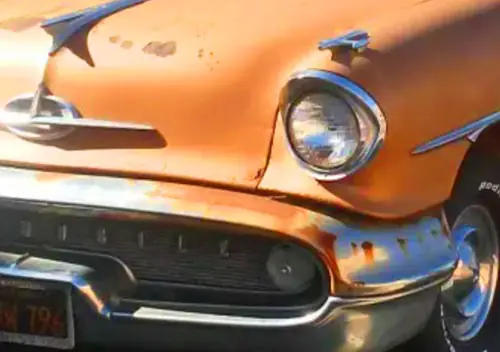
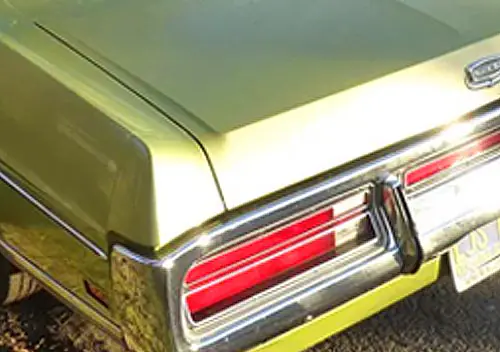
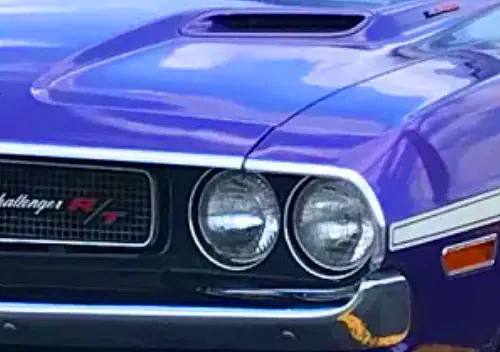

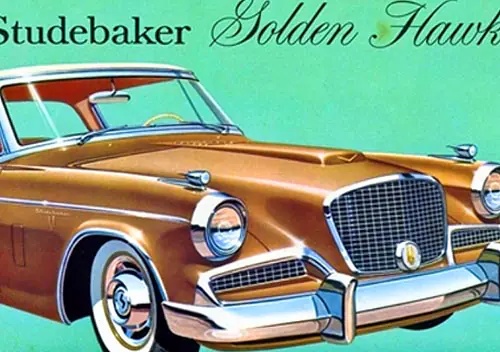
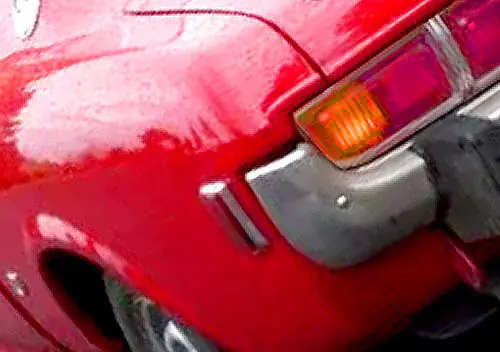
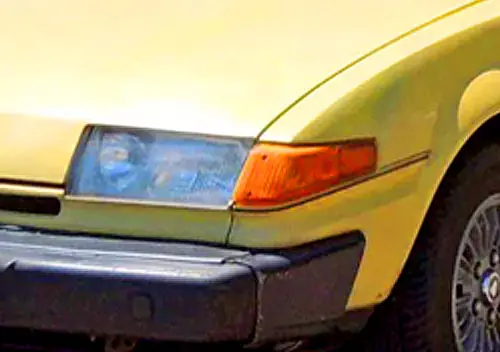
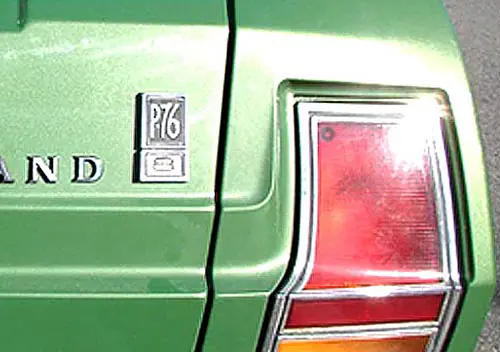
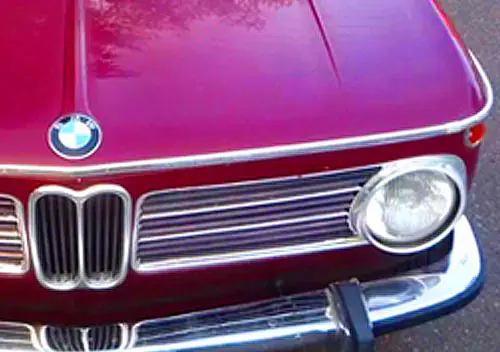
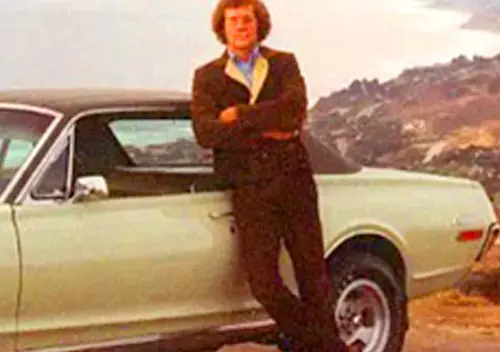
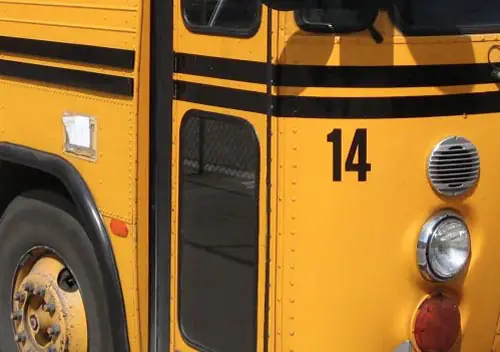
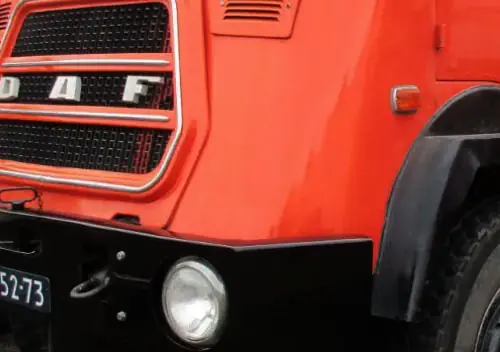
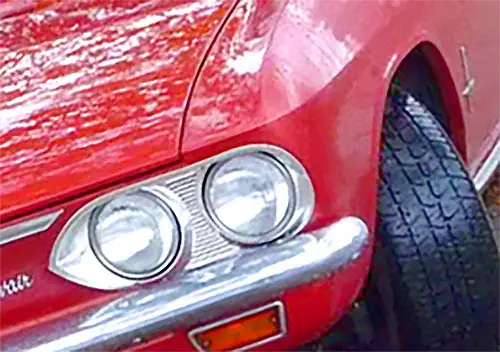
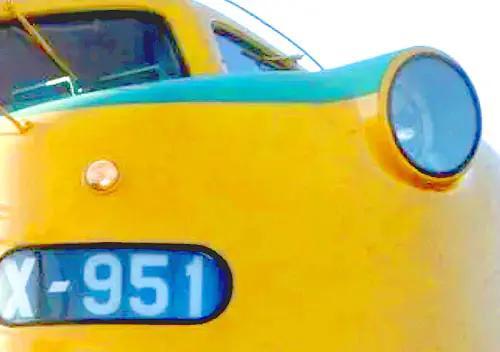
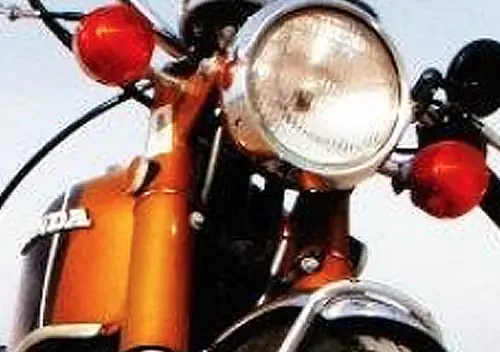
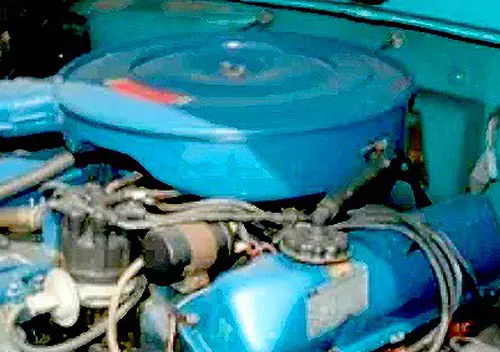
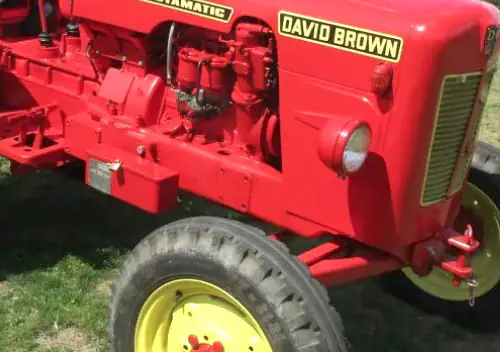
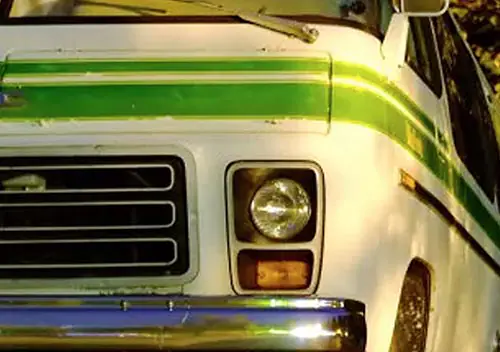

I remember seeing these when I was a boy. I found the 2 door sedan unattractive, particularly when it was painted bumble bee colour. I found the coupe hatchback version more attractive. I have never seen a 4 door sedan or a station wagon here in the U.S.A.
The US never got the wagon, but we did get the 4dr sedan. There was a red one on CL, for $500, about 2 years ago in Boston or Lynn, MA(I forget).
It hasn’t been started in years, but whatever, I didn’t have the money at the time, anyway. 🙁
Saw a wagon in greece
Not my favorite either (particularly those honeycomb hubcaps) but I must say the Australian versions with chrome blade bumpers are much more attractive.
Or closer to attractive, anyway..
The B210 could have been a much better looking car. IMO it had the same visual shortcoming that many modern cars are burdened with. Their flanks are too thick vertically. If the designers could have reduced the profile height of the body by roughly 4-5 inches at the beltline, the b210’s profile suddenly becomes much more appealing.
Another trick that reduces body height visually, are black plastic or rubber rocker panel moldings. IMO not enough manufacturers use this visual aid that makes a car appear to have a sleeker profile.
Smaller diameter quad headlights would have helped as well.
You can see the visual difference below.
Good point, Daniel.
Back in the mid ’70s, Motor Manual ran a competition inviting you to modify car brochure pics along these lines. I remember someone entering a ‘260Y’ like yours.
Sort of reminds me of a Renault Fuego, which was not an unattractive car.
It’s surprisingly much improved by the body-side molding usually seen on upmarket US-spec cars (such as Sarcasmo’s just below) which visually lengthens the car with its’ full-length horizontal run.
Ugly or not… My friend has a mint original 1977 B210 liftback. Here it is along with my 1981 1.8 TE72 Toyota Corolla Deluxe 2dr sedan. 🙂
Pic 2
Looks like a cheap attempt to ape the Lamborghini Espada’s shape on a narrower platform. Which was a bad idea since something that unusual needs a wide stance and interesting detailing to pull it off.
I doubt the butt ugly Espada, was any inspiration for the Datsun Sunny/B210 hatchback.
The Jarama and Espada are the ugliest cars in Lamborghini’s history. Who designed them, Citroen? Ugh.
The Espada could’ve sported AMC badges in those days, and nobody would’ve noticed it.
Espada – ugly?
+1
I’ve seen hatchbacks, 4-doors and the 2-door sedans, but I don’t think we ever got the wagon here in the US. My first car was a 1976 B 210. My most vivid memory is the complete lack of headroom. I had to have the seat reclined at a crazy angle to avoid hitting my head, and I’m only five foot ten inches tall. I don’t know what the metric equivalent of that is, but it’s about average height for a man.
I did like the honeycomb hubcaps. They were distinctive. I had a neighbour, when I was a boy, who had a Datsun B210 liftback. I believe it was green. I remember it had a 5 spd. manual shifting transmission. It had honeycomb hubcaps.
I sit tall, and once I was forced to ride in the back of these for many minutes, which felt like hours.
You summed up this car very well. I don’t care how well-built or reliable it may have been. Ugly does it in for me. No sale!
Ugly is as ugly does. Myself, I think it’s pretty for the same reason. I was overseas and there were lots of things that showed up in Panama. When these cars were young, so was I. That makes for fond memories.
About 5 years of New England rust really made these look awful.
Yes, the looks of the B210, and its driving dynamics meant that it didn’t interest me in the least when new. Yet the clean grille and modest bumpers of the 120Y version give this car the visual “help” I think it needs. The “enthusiasts” and elitists slag this car mercilessly, but it managed to provide reliable service, an ability that many cars, even “appealing” and “elite” cars, lacked at that time. If it won’t run when you need it, what good is a car?
Thanks for the post, William.
These, the F10 and the early Subarus are perfect examples of the really awkward styling coming out of Japan when they took all of the design in-house. They were certainly looking for their design language in the most adventurous ways. Guess the 510 looked really old fashioned by 1974 or so, but these B210’s and the other examples from this era sure didn’t age gracefully like the 510 did.
All that said, it would not take a lot of tweaking to make the B210 a lot more attractive. Clean up the really odd B/C pillar treatment (this was the major flaw IMO), enlarge the wheel wells a little, widen the track width and clean up the grill/headlight/tail lights areas a little and these would have been a pretty slick looking hatch.
The two door sedan now looks O.K. to me .
When new I thought these were funny looking but Datsun made another little car that was _far_ uglier , i don’t recall it’s model name/number .
There are still some of these doing yeoman duty around California , not many that are well taken care of , just Barrio Bombers that refuse to die .
-Nate
You’re thinking of the F10, a truly homely little car. Makes this look like a Jaguar.
I’ve always liked the F10. I don’t know why, probably because of its homely appearance.
Gotta be the F10 or Cherry. Those cars made the Gremlin look like a masterpiece…
Well, maybe not…
I’ve seen a number of Datsuns of this vintage around L.A. — including a two-door B-210 sedan in a truly awful slightly greenish yellow color — that have clearly been exceptionally well cared for and probably garaged. The yellow one even had original wheel covers. (I’m not sure they were THE original wheelcovers, but they certainly looked like OEM and the idea that someone would get aftermarket wheel covers that looked like the hideous items Japanese manufacturers stuck on cars in the ’70s strains my credulity.)
I call it Pachinko Baroque. Now they’re no fun anymore, having wised up since then, & their cars look pretty much like everyone else’s today.
And to think they were ridiculed for being uncreative.
This was also the car that cost the government of Victoria Australia over $26 Million dollars due back in 2004 after it was found that one of their speed cameras supposedly clocked a 1975 120Y of doing 158 KM/H going past it and yet the car is was only capable of doing 117 km/h
http://www.theage.com.au/articles/2004/05/14/1084289885456.html
Quite reminiscent of the Rodney King beating incident in Los Angeles when cops accused him of going 115 mph in a 1988 Hyundai Excel. That thing could barely break 90 (and it took running the length of Nebraska to get it up there) when Car and Driver tested it, but the 115 mph number was blasted all over the media.
I remember listening to the local radio when they had the subject 120Y at a race track and were broadcasting its speed live as it was being tested, wow, 12 years ago now!
There are still 120Y’s around, eg one in my neighbourhood although I haven’t seen it in a while – and it was not street parked for a CC anyway.
Truly a poor excuse for a car, but cheap, reliable transport for many.
Also the 2-door sedan body was not sold here apart from a single batch that I gather may have been originally intended for another market; I ran across one many years ago.
I always thought these cars were hideous, especially in the hatchback form. The honeycomb hubcaps made them even more ugly!
I’ve shot a number of these still here on the streets in Eugene, including a pristine green 4 door (image below) that is driven by a middle-aged dad with two big teenage sons! Quite the sight. I’ve shot it several times now, and I still keep seeing it. I’ve been hoping to run into the owner, because I’d really like the back story on this b210.
And a B210 CC on them has been on my To Do list for years, but I’m glad someone finally beat me to it.
Yes, these were a bit weird, and not quite up to Corolla standards in refinement, but they did provide simple, cheap and durable service to lots of folks at the time, mostly young boomers just starting out with their first new car, or some more adventurous American car owners downsizing after the first energy crisis, which gave these cars a big boost.
An old friend of mine had a B210, this was around 1985. He still drove it every day, but it had been rolled at some point, and every body panel had been dented, including the roof. It was tradition whenever he showed up, to take a running kick and add a new dent. Fun times.
These cars were all over the place in LA back in the day. They had a nickname of the “Atomic Cockroach”. Beautiful they ain’t, but rugged and long lasting they were, at least in no rust land. The F10 (Cherry) was even worse looking. We laughed at these cars back then, but we all know who got the last laugh.
In the early 80s, a law school friend drove one of these. Not an attractive car, but it did what she needed it to do. As soon as she graduated and got a job, off it went for something a little more socially acceptable (a 1985 Mazda 626.)
I got a ride in it once – it did not hit me as all that refined. I would never have traded my high-mile 71 Plymouth Scamp for it, which was a much smoother and more civilized car, even at it’s advanced age.
it did not strike me as all that refined
Understatement of the day! 🙂
It was old school small-car RWD tech; something like a 1950s Morris Minor wearing bell bottoms and wide lapels, but made out of that hard-to-kill 70s polyester, not British cloth.
Neat summary!
I drove one of these for a while, as it was a delivery vehicle for a pharmacy I worked for in college. It was a hatchback with a five speed; funny to think now that a store would buy a manual as a multi-driver car!
It was simple and plain, but so were many other small cars at the time. My personal “ride” was a ’72 Maverick. and the Datsun seemed well screwed together and solid in comparison. It did its job reliably with little fuss; I would have traded my Maverick for it gladly, but I suppose that’s faint praise…
Mine was the ’74 version of the featured hatchback. It was a $400 clapped out rust bucket, but reliable as an anvil — and it had the best heater of any car I’ve ever owned. Five minutes running in the coldest Ohio winter days and you’d have HOT heat and plenty of it. The little A13 engine w. 4-speed could get out of its own way and it never overheated. Damn that tinworm!
Took driver’s ed in a B210. Loved it. So much easier to use than what was available at home.
Soft spot in my heart for this reason.
Thanks for the write up, Mr. Stofford!
Ugly? not really it was a Datsun the 140J was ugly the 180B was ugly the 120y was just more of the same, I had one of these 120y in Tassie having left my daily driven EH sedan on the other island it was a good little bomb drasticly underpowered in hilly Tasmania it was however quite reliable doing 5000kms in 6 weeks the only “repairs” were to clean the points and discard the clogged air filter it ran and drove ok for what it was.
As for that speed camera Ive seen 160kmh indicated on a 120y speedo the car was a near new rental from Avis, so good ones can wind up to a fair rate of knots.
yes .. i can confirm that too .. the 1172cc 4 door 120Y’s were good for a genuine ‘ton-up’ on the speedo ..just ! 🙂
..and they weren’t ‘slow’ either when run up against a contemporary 1298cc Escort or 1256cc Viva or 1275cc BMC ..they were the truly “slow” ones !
When I think of a 70s Japanese car, this is probably the first image that springs to mind.
When I was a little kid this, along with the Allegro and Maxi and a few other Japanese cars (in similarl colours) etched in my mind the idea that there had to have been something far wrong with people in the 70s to have bought such abominations. Loads of these around in the early 80s. And that snot colour as well. All gone by the 90s.
Plenty of 1960s Morris Minors still being used as daily drivers at that time…
Plenty of Morry Minors still in daily use here some with transplanted datsun 1200 engines
Okay- I knew something was missing from the first street pic and the ad pic solved it. Half the cuteness and oddness of this vehicle is the dimpled hubcaps. It frankly looks incomplete without them. I remember these from my childhood in the 1970’s.
As ugly as the B210 and F10 were, I thought the first generation Datsun 200SX was even uglier. At least the B210 and F10 didn’t have that awkward Buick-like bodyside crease line, adding a distinct science fiction touch.
Now that one we did not get in Australia. I think I’m thankful.
But then we missed out on the next 200SX, which was incredibly handsome. We had to wait until the subsequent generation, sold as the Gazelle, which flopped.
My best friend in high school (mid to late 80s) his mom had a 4-door B210 in yellow. That got so rusty the seats started sagging thru the floor… (still started every time and ran great) She pushed the 4-door into the backyard and replaced it with a yellow 200SX just like this one. And almost as rusty-going thru a puddle got your legs all wet. My freind grenaded the motor in spectacular fashion trying to do a “burnout”, with the bumper pressed up against a light pole. (We were stupid teenagers, I’m sure if we had the IROC’s we wanted we’d all be dead now) . When we dragged the 200SX home to see if the 210 engine would fit, during teardown we discovered that these (200SX) had fiberglass front fenders! I can’t imagine they made enough of these (and sold them in WIsconsin) to have both steel and glass ones…
1968-Skylark-meets-sardine-tin styling…..
They may be ugly to me and you, but I have a book about Nissan in the USA from 60-80 ( written in 82) and there is a chart shown that was from a Nissan sponsored owner survey from 1978. The only car in the Datsun line up that scored higher for appearance as a buying factor was the 280Z. The 200sx polled 30% as the percentage bought because of its styling. The 280Z was 35%. All the other Datsun models were under 20%. So the buyers certainly didn’t think they were ugly.
As a kid in the early 80’s I used to think these were kind of ugly. Now, I would not mind owning one, but I would certainly lower it some and install some appropriate alloy wheels. I still don’t like those hubcaps!
Lots of these around in 70s and 80s Britain til the girder worm saw them off.You could find cars with panels like lace curtains that ran smooth as a sewing machine.
…bits and pieces didn’t fall off with regularity…
That depended on the climate. My father’s (post-divorce) girlfriend had a liftback B210 in Montreal in the late 1970s – after a couple of years she complained of rust flakes flying up from the hood and hitting the windshield on the highway. She traded it in on an F10, so I guess it must have been reliable enough to encourage repeat business.
It’s just difficult to fathom that the direct spiritual niche’ successor to this car is the Sentra which has now grown into a compact car range much like the Corolla and the Civic.
The B210 may be kind of ugly, but I can think of a few new Nissan cars that are even uglier , like the Nissan Leaf, Juke and Cube. When the Datsun 210 was restyled in about 1980, I thought it was an ok looking car. They went back to cleaner styling , more like the 510.
If you think the Nissan Leaf is ugly, check out the Cube. How about the Kia Soul. I remember first looking at one and thinking “What?!” And How about the Toyota Prius, the Prius V, and Prius C. What the f___ was Toyota thinking? While I like the hybrid technology, I just don’t like the appearance of today’s hybrid cars.
I don’t mind the current Soul, but the Cube is a head-scratcher. I pointed one out on the street to an art student I know (who does not normally pay attention to cars); they walked around at it, staring perplexedly, and finally said, “…Why?”
The second- and third-generation Prius is much easier to understand: It seems to be trying very hard to look like a shuttle craft from Star Trek: The Next Generation or similar science fiction TV show. I have a feeling in 20 years the Prius will periodically show up in science fiction movies and TV shows itself, having been selected because it looks like it would be appropriate in the distant future or on some alien planet. It can be parked next to a Citroën DS, which still does similar duty for about the same reason.
If you want a stylistic head-scratcher, look up the current Toyota Aygo, which looks like a Pokémon character.
The Toyota Aygo had to express its Japanese roots. It was inspired by the Manga comics. So I’ve read….
I think it works on the Aygo, the X-face on the latest Yaris looks completely over the top though. You just see that it was literally an afterthought, it doesn’t match with the rest of the car.
I had a 210 rental once. Totally forgettable, even in that era of Pinto rent-a-cars. But here’s a question for the CC intelligentsia: the U.S. 210 Honeybee ad mentions that some small cars “don’t even have” a back seat. I presume they’re not referring to true two-seater sports cars. Was there a stripped-down entry level car of that era with no back seat? I’m thinking maybe Gremlin ….
Gremlin and I think Chevette Scooter.
Certain Japanese models, unsurprisingly, had even busier detailing. The rear lamps on this GX coupe are just an example:
Just when you thought it couldn’t get any busier…..
I do like the colour though.
Nice. Never seen those rear lights.
I think I like (almost) everything about this one!
Ugh, my best friend’s mom had a yellow notchback coupe. Nasty crude little car.
I am certain that the B210 4dr wagon (1972-74?) made it to the U.S. because I got to drive one a few times. My mom dated a guy who let me drive it. It was 5 speed stick, and I liked driving manual. Other than my step-mom’s MGB, it was the smallest car I drove in my high school years between 1976-78 (in contrast, I usually drove my grandmother’s (RIP, Gannie) 1969 Olds 98 with the 455 Rocket). It was a light yellow, and it seated 4 comfortably. I don’t remember it driving badly, but to me, I was driving a stick. But the picture of the wagon above doesn’t quite agree with my memory–I don’t remember the upsweep on the back doors before the C-pillar, and it was nowhere near as butt-ugly as the examples above. Later my dad had a 1978 4dr Datsun 810 with an i6–that was an awesome highway car. I lived in Atlanta at the time.
In Australia, the big appeal for the 120Y was that it was available as a four door sedan. For some weird reason, we never got a four door Corolla here until 1975 or ’76 – maybe Toyota thought it would cut into Corona sales? So given the Australian market’s well-known antipathy toward two-door cars, the Corolla remained something of an also-ran for years, while Nissan raked in the dollars. Conversely, IIRC Nissan only sold one small batch of two-door 120Y sedans here – they were a real novelty if you saw one.
Wow! Pete, I didn’t know we got four-door Corollas so late. How utterly baffling.
I’ve never seen a 120Y two-door sedan, I just presumed they were never sold here. I do remember flipping through an old Modern Motor with spy shots of the 120Y and I can absolutely see why people would have been shocked when it was launched. The coupe, in particular, was just bizarre. The sedan is quite pleasant, really.
You had 5 door wagons NZ only had 3 door models assembled here the 5 door versions were imported built up from OZ.
Hmm, just mentioned the 2-door sedans in a previous comment! Did you hear a story about how they were intended for another market, possibly South Africa, but ended up in Oz for some reason?
Quite likely. We got a few oddities from Nissan Australia back in the seventies and early eighties when the wrong CKD packs turned up.
A family friend had exactly the orange B210 Plus pictured in the ad above as a commuter/work car when I was in HS in the mid ’80’s. He was a union steamfitter who carried lots of tools to jobsites all over NJ. His daughter was a friend of mine and drove it several times in a pinch. I recall her being embarrassed to be seen in it, but confided that it was much more fun and easy to drive than the Dodge Omni he’d bought for her own use. (The Omni was later flipped by a short-term boyfriend of hers, then hammered back into reasonable shape, driven for another few months and ultimately replace with a ’75? Pontiac Astre.) That family had some very eclectic vehicles. Her mother, a woman of perhaps 4’11” in height and all of 80lbs drove a ’74 Coupe de Ville until the fenders literally almost rusted off and the vinyl top faded 4 shades lighter than when new. Every time she test drove something new (around the mid ’80’s) she’d say, “It just doesn’t drive like my Cadillac”. Ultimately she settled on an 84-ish Pontiac 6000 stripper. ( cars had increased in price exponentially since that Caddy had been purchased in ’74 and sticker shock threw her frugal husband for a loop). That Caddy sat in the side yard until well after I graduated from college, and I always wanted to ha ul it off and save it from the crusher.
Datsun B210s rusted do quickly in Canada that the manufacturer gave dealers a bounty to buy them all back and crush them. None on road in Canada at year 10 .
If only the body and frame was as well built as the engine and transmission. I remember seeing these cars when I was a boy up to about 10 or 11 yrs old, but then they just disappeared. They either went to the junkyard to be crushed or people saved them, and never drove them, just stored them in their garage protected from the elements.
These are the proverbial cockroach over here. I’ve seen more of these than any other Japanese car from the 70s. The curbside classic of last resort.
Another great subject and write-up, William. Gosh, I remember so many print ads for these in my parents’ National Geographic magazines. I thought the hatchbacks were endearingly hideous.
Yes, very nice article. My sense, having been around in the late 70s/early 80s, was that these cars inherited the “young guy beater” title from late 60s/early 70s Darts/Valiants/Dusters. Even with the Slant 6 and Torqueflight, Aspens and Volares just couldn’t cut it as a beater from a reliability perspective. These small Datsuns, with their Toyota and Mitsubishi counterparts fit the bill as a beater perfectly.
I actually thought the 210 Fastback was one of the better looking Japanese small cars of this period – but that F-10 – that was one weird looking car……….
I remember how some Datsun dealers would ‘pimp’ up the B210—it was the first time I had ever seen a vinyl top on a hatchback. Add in some 4-spoke Appliance wheels, some even-cheesier tape striping, a set of louvers, and a set of period-correct giant chrome fog lights and somebody’s leisure-suit clad dad would have snapped it up in a heartbeat…..
Faded turd-brown, clutch slipping and ignition tumbler failing, this is what I got to drive around in my first year of college after my 1976 Rabbit gave up the ghost. My father had purchased the B210 (we called her the “Brown Bean”) from my sister’s roommate in D.C. for the princely sum of $250 back in 1988. The ultimate cockroach of cars…indestructible, despite the faults. It had the back-up buzzer sound, white (well, sort of white) vinyl interior and those crazy honey-comb wheel covers. I passed it on to my cousin, who gave it to his young brother-in-law. It was still buzzing around north TN into the early 90s…
I had a neighbour who had a 2 door hatchback version of the Datsun (Sunny) B210. It was blue in colour, with a touch of green. Although I didn’t find it very attractive, I thought it was better looking than either the 2 door sedan or the 4 door.
Like some other cars, fat wheels and lowering totally transforms them
I was going to say exactly the same thing. This turquoise one you’ve shown here is a great example: just a bit of a suspension drop and better wheels, and you get a completely different car. And of course as others have said, it’s 100% better too without the awful battering ram bumpers we got saddled with here in North America. Pity that we didn’t get the wagon versions, either—as William said, more conservative-looking than the sedans/coupes, but very attractive, I think. The two-door wagon is especially cool.
Another Japanese car that sold in Britain by the boatload but had a tragically short life due to rust. Looks aside, it deserved to sell well. 70 bhp from 1171cc was bloody good going at the time, the contemporary Ford Escort 1100 got maybe 55 bhp. More important to us was the fact that the Datsun would start first time every time and not break down.
I think there’s some confusion about the 120Y/B210 amongst the comments here.
Looks? Well that’s subjective, one man’s meat is another’s poison.
As for the performance, I think the answer there is that the US B210 was somewhat hampered compared with it’s European and Asian 120y relatives. The B210 had an awful lot of, for the time, complex add ons in terms of exhaust gas recirculation and smog restrictions. Plus air con would be a notable weight penalty.
Now, it so happens that I own a 120y and for what was at the time a budget runaround it is quite sprightly, has an excellent gear change and as usual excellent ergonomics. Of course it ain’t no sports car; steering is vague but no worse than any other RWD sedan from that era with a steering box. The rear suspension is of course dated for the time, a well set up, coil sprung live axle such as Fiat were using would have been a notable improvement. It’s also rather low geared, another cog would have been a good addition, nonetheless most European budget cars at the time still ran a four speed box. Again, there were outliers like the Fiat but they were exceptions the the rule.
So all in all the Datsuns, through the Cherry to the 140, 160 and 180 were just the right cars for Datsun to make a big dent in the market at the time.
Yes, this! I’m only 5’8″ and it’s the only car I remember where I didn’t have enough front seat headroom, not even in the 4 door sedan. The roof on these is incredibly low for a non-sporty car.
When these (B210s here) came out in Canada, in 1976-77 or so, they had a promotion that if you took a test drive they gave you a card or something to keep track, and after maybe 5 test drives, then gave you a watch. It was a watch mounted in a little steering wheel, cool actually. After the first few test drives, the sales guy gave up on riding with me, and let me take it out on my own. After having driven a Corolla for a full week, driving this was … underwhelming. Everything inside was plasticky, cheap, cramped. etc. I remember how small the wheels looked compared to the height of the car.
What was the engine, L20B?
They were TOUGH!
These arrived during the dry spell of small rugged 4-cylinder engines.
The old favorite repurposed fours had dried up, they were well over the hill.
The little pushrod Datsun was a perfect powerplant for all sorts of stuff.
Nope, just an A12.
Thanks, that’s why the question.
Wrong call-out, right engine. Lol
Some stuff gets fuzzy 40 years on.
Anyway, just a simple-stupid bulletproof engine.
in 1977, my Dad bought an orange 4-speed hatchback for my brothers and me to use. It had a suspension like a coal cart, the 1200-something CC engine was pretty weak and needed flogging, the seats were an uncomfortable, sticky vinyl, and it was ugly as sin. All that said, it never broke, got 44mpg even getting the snot revved out of it, had large cargo capacity with the seats folded, and with snow tires was better than expected in the snow. It did rust early, but lived until the youngest brother wrapped it around a telephone pole (he was unhurt). It was the right car for the time.
I bought the forerunner to this car, an LB110 – 1200 Coupe, new in 1972. It was a very fuel efficient and kind of ‘pretty’ little hatchback. Perfect for a college student on a tight budget.
I took it in for a service (50,000 mile) to a Datsun dealer in southern CA where I was going to school. A salesman immediately came to me in the lounge and wanted my car for a trade, on a new one of these 210s. The lot was full of these ‘kind of ugly’ 210 fastbacks and I let the salesman know of that sentiment I had for them. He quietly agreed and had hoped he could get my red coupe in for a quick re-sell, because he confided he thought the new models were a bit off in their styling and may prove difficult to move. The earlier cars sold like hotcakes and he could never have enough on hand to satisfy demand, whether in coupe or notchback configuration.
The 210s were certainly a divisive appearing critter; you either hated them or sort of accepted them for what they were
I had an aunt and a cousin that owned one of these B210s. I road in both many times as a young child.
I’m in my 50s now and can still conjure the smell of these cars…and it isn’t pleasant.
DIRREK
The crankshaft of my ’74 Innocenti Cooper 1300 had given up and I urgently needed wheels to get to work every day. Fortunately there was an auction held in the street where I worked, a dull industrial area, a company had gone belly up and a live auction was held in the street with some cars.
An ugly once bright orange 120Y wagon dented and tired was also auctioned off, so I offered money against some car wheeler dealer types.
The auction for the Datsun went hot as I baldly offered 40 Dutch Guilders for the car, \
It was mine.
It was ugly, corroded, faded orange and of course, when I got the ignition key the darn thing would not start.
I got our company forklift, drove it down the street to either push start the car or start it with jumper cables. When I connected the jumper cables the starter motor sounded like a happy young puppy and the engine ran immediately.
I scored a cheap battery in the scrap yard and drove around in the car we got to call Dirrek after the big D on the steering wheel.
Dirrek has been no doubt one of my all-time favorite cars, the hatch did not close or lock, so every once in a while you had to back u p into something to make an extra dent to make the hatch stick again. Dirrek was never lazy or boring, he started at minus zero assisting my fathers Princess 2200 Mk 1 to come alive in winter time and to jumpstart most other cars in our street.
I drove Dirrek around for approx one and a half year, kids from the neighborhood covered Dirrek in stickers and people always gave Dirrek the right of way when they saw this ugly poor dented Datsun,
Once, waiting for a bridge to close ( this is Holland yeah !) the old Opel in front of me did not start, so I push started it, the guy gave me a friendly ‘thank you’wave, drove off when I saw I made a bid dent in his rear bumper with Dirrek.
Dirrek was sold to a friend who killed him by driving through the brick wall of a garden.
Dirrek was a deluxe Datsun and had a radio and tinted windows.
Dirrek made my friends and me change our minds about the reliability of cars, we all had Alfa’s, MG’s BMW’s or NSU’s, there was a Jag and me and my Cooper 1300,
Dirrek beat them all, Dirrek never ever let us down he had vinyl seats, he was ugly but he was the proof that the Japanese simply understood the message of what people really wanted from a car much better then any other manufacturer,:a car that simply always works.
For that the 120Y was a landmark and then yo come to think that these Datsun engines originated from Austin who helped Datsun to make cars after WW II.
There are almost none left on the road in NZ but the powertrains can be watched every saturday night at speedway in the learner/kids class Ministocks where the gentle art of full contact motor racing is learned a whole class of race car based around the 1200 Dustbin.
I’ve had just about every brand of Japanese import except for Nissan/Datsun. There was something about them that never appealed to me, not even as a second-tier Japanese car. They seemed like a third-tier, behind even Mazda and Mitsubishi, the equivalent of Hyundai and Kia before they hit US shores. To this day, Nissan is still one of the primary brands people with poor credit turn to when they want a new car.
I had a ’74 Datsun 710, the next model up, whereas these 210s were very common, the 710 was almost invisible, being between the 210 and the 610 large model.
It seems back then (and even now, my sister owns a ’97 240SX she bought new) we were a Nissan (Datsun) family, said sister previously owned a 1990 Toyota Tercel, but that’s the only Toyota in our family. Back in ’76, my Dad looked at the then new F10, wanting a FWD car (we lived in Vermont back then, so winter traction was a big deal) but there wasn’t too much to pick from. VW had the Dasher and the Golf, but both were really pricey; my Dad didn’t care for the F10, not due to its (pretty much panned) looks, but he was put off by an air vent on the hood…to him, an engineer, it looked like a cobbled together engineering change, maybe to help with cooling, but it put him off such that he bought a new Subaru DL instead. Back then Subaru maybe had one AWD wagon, this was before the BRAT came out, the rest were FWD. Still, he didn’t want or afford a Jeep or a 4WD truck, which were about the extent of the choices beyond FWD. We had a RWD station wagon which was OK, but it was also heavier, and took a lot of fuel to run, so the Subaru was it. I had a Fiat 128, but it was not very rust resistant, so my Dad never considered a Fiat, a Saab would have been too much money. Anyway, eventually my 2 youngest sisters owned qty-4 200 or 240SX models (one still owns it as I mentioned) so Datsun/Nissan was the most popular Japanese car in our family.
Back to the 210, when we moved back to Vermont, from Virginia, the people who bought our house had a 210, as I mentioned, they were very popular, and of course Virginia gets a fraction of the snow we got in Vermont, so traction isn’t as big a deal. Of course the transition to FWD was well underway, such that by the mid 80’s, it was starting to get hard to find a RWD car as many of them had been discontinued by then, There were a few models that persisted with RWD, the Datsun 510 that came after my 710 was RWD as was the successor to the B210, but I think the next generations in ’83 or ’84 were FWD. My sister’s 200 and 240SX were all RWD, but they were gone after 1998…everyone seems to want to buy my sister’s car (unfortunately it is an automatic) since the 240SX has become pretty scarce, and lots of people still prefer RWD coupes….good thing we now live in the sunbelt. Only thing for her is that she’s getting older (as we all are) and the 240SX is a pretty low car to get in and out of, great for when she was 20, but not so much in her 50’s. My car isn’t too high, but I really feel like I’m squatting down when I get in and out of her car the few times she drives me somewhere.
When we 1st got our 4 door in 1974, I did not like it. Thought it hideous. Dad should have bought yhe used Capri on the lot.
As the years went and I learned about cars and engines and cams and carbs,it just grew into a beauty. Dropped about 2 inches on 6 x 13s. It is a knockout. I scrapped my own in 2022. Heartbreaking. My fleet now has a 90 Z32 tt, 99 Aristo now single and a 2000 S2000 replacing my 120y. Here is a pic of a recently redone one in Trinidad. Guy also has a 60s Corsair with a Ford v8 for drags..9sec I think.